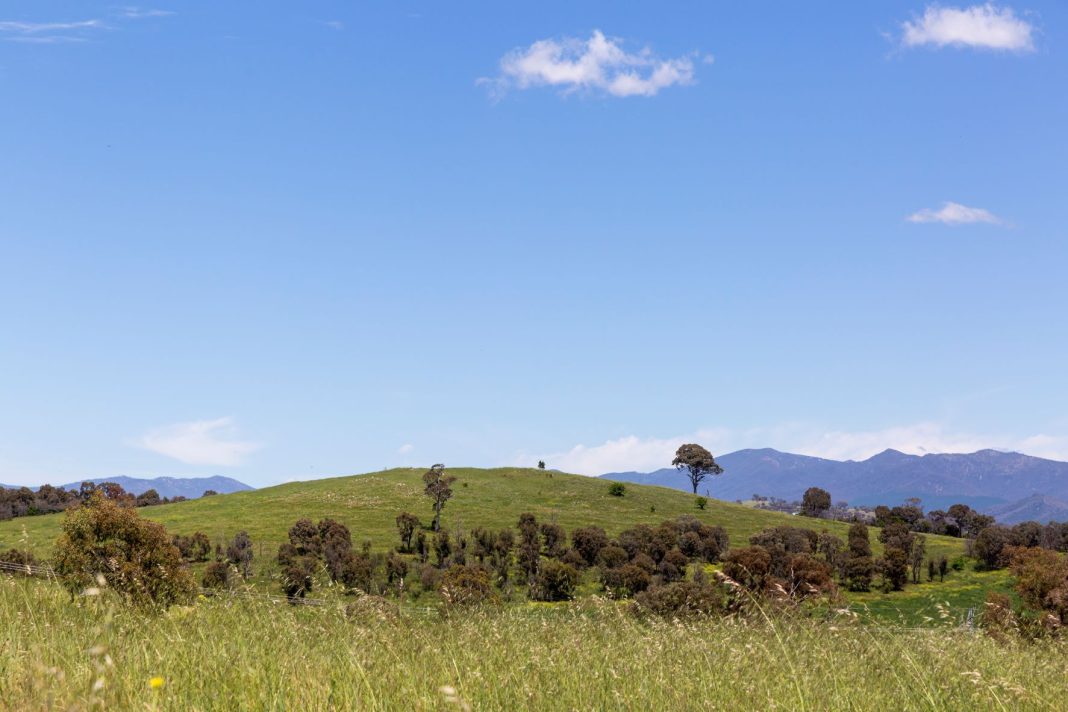Canberra is truly ‘the Bush Capital’: almost half of all Canberrans live within 500 metres of a nature reserve, and more than a quarter live within 100 metres.
The ACT Government’s Canberra Nature Park Reserve Management Plan, published today, sets out how that bushland will be managed over the next decade – protecting native habitat and endangered species, and ensuring Canberrans can recreate in “these iconic reserves”, said Mick Gentleman, ACT Minister for Planning and Land Management.
Canberra Nature Park covers 11,400 hectares; it is home to kangaroos and plentiful bird life, to threatened plants, and to endangered animals, including the golden sun moth, the striped legless lizard, the grassland earless dragon, and the pink-tailed worm-lizard.
“Canberra’s population has increased,” said Ian Walker, the ACT Conservator of Flora and Fauna. “So we need to take measures to ensure that the environment is looked after, but also to really welcome the community into these reserves. They are a place that people in Canberra love, and it’s important that we recognise and support people to get out into them.”
In normal times, the reserves are popular with walkers, runners, mountain bike riders, and dog walkers, but during the COVID-19 lockdowns, Canberra Nature Park had its highest recorded level of visitation, as fitness centres were shut and people escaped their homes to return to nature.
The ACT Government sees Canberra Nature Park as “a wellbeing hub for the people of Canberra”, and this is the first Management Plan to incorporate the ACT Wellbeing Framework.
“It builds on the recognition that getting people out into nature is good for them, and good for their mental and physical health,” Mr Walker said.
But under new best practice codes, humans and their animals must stick to designated tracks and trails.
Drone use will also be prohibited within the Park, as in the Territory’s other parks and reserves.
“It’s important that we look after and conserve our environment, and one tool is to manage people in the landscape,” Mr Walker said.
The Management Plan also sets out policies to control weeds and pest animals (rabbits, foxes, cats, Indian mynas, European wasps), and stop inappropriate fires.
The Management Plan incorporates nine reserves added since 1999, which were not included in earlier plans, bringing the number to 39. They include: Goorooyarroo, Percival Hill, Jerrabomberra West Grasslands Callum Brae, Kinlyside, Jarramlee/West Macgregor Grasslands, Budjan Galindji Grasslands, and Nadjung Mada.
“These 39 reserves are really fundamental for getting people out to understand, to explore, and to really appreciate what is in our backyard,” Mr Walker said. “If people understand and appreciate, they care for it and look after it.”
Climate change will affect nature across Australia, Mr Gentleman said. These nature reserves protect yellow box–red gum grassy woodland and natural temperate grassland and the birds and other species that live there.
The government will encourage the work of ParkCare groups and other volunteers, while Ngunnawal traditional custodians will be more involved in land management and cultural activities.
The nature reserves are also “a reflection of what we need to do prepare for population growth”, Mr Gentleman said. The ACT’s population is expected to almost double within 40 years. The Management Plan will ensure people have access to open areas as the city grows, and that the wilderness areas and species that live there are protected.
“We want to make sure … the way we interact with them is symbiotic with their protection, as well,” Mr Gentleman said.
Canberra faces a housing problem, with Australia’s most expensive prices and some of the most expensive rents, but Mr Gentleman explained that setting up new parks would not take away from residential land. The government’s target is for 70 per cent of Canberra’s future development to come from infill, and 30 per cent from greenfield development.
“We can ensure we have enough residential land available for Canberrans,” Mr Gentleman said.
When preparing its four-year Indicative Land Release Program, the government works nature groups to select residential landsites and set aside reserves. And according to the ACT Planning Strategy, Mr Gentleman said, Canberrans “don’t mind living in denser areas as long as they’ve got good open space to recreate in”.
“And I’m looking forward to my grandson being able to use Canberra Nature Park as well.”
Get all the latest Canberra news, sport, entertainment, lifestyle, competitions and more delivered straight to your inbox with the Canberra Daily Daily Newsletter. Sign up here.



